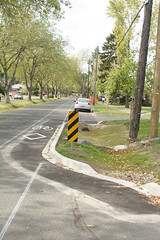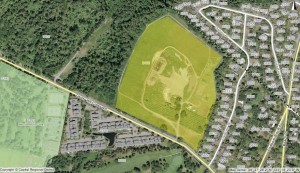In the latest round of this saga, Council had received a note from Bill Cochrane, the Chief Administrative Officer of Oak Bay, rehashing history and offering a few new points. They eventually opted to follow Cochrane’s recommendation that Oak Bay Engineering prepare a literature review of all the various plans in the past decade, to be presented to council at a further date. That review will likely include provincially-rejected plans like a storage as getting the provincial Environment Ministry to review options prior isn’t likely, in the words of Cochrane.
Where this leaves the potential $5 million funding is unclear. So it seems are provincial officials as to exactly what Oak Bay is doing, something Mayor Causton reported after he spoke with both the deputy minister of the Environment and the Community Services ministries. With the funding unclear, so is the potential tax burden on the whole municipality. One interesting fact that came to light tonight was that the oft-quoted figure of the Uplands being 30% of Oak Bay’s tax base is likely incorrect. Cochrane did some estimation and calculated it to be around 12%, assuming the average property is assessed at about $1.7 million.
In further joyful news about money, the costs keep rising with regards to a gravity system. Kerr Wood Leidel, the engineering firm contracted to investigate the various options, looked at a deep sanitary sewer more closely and figured that the cost is likely to be 10-25% higher than the $18.5 million previously quoted. Given any new pipe would be running beside the existing joined sewer, it would be longterm cost effective to replace that pipe as well. Although the pipe is in good shape, it is jointed and thus is susceptible to water leakage or INI (see my glossary on sewage terms). This would add about $6 million to the cost, bringing the public cost to about $29 million. That does not include the estimated $7 million+ that private owners still need to foot for their connections.
Councillor Herbert also raised an interesting point tonight after he had looked into the City of Vancouver’s provincially-approved plan for sewage separation. That plan is strikingly similar to the existing Oak Bay plan, for which the bylaw has not been rescinded. Both call for a 2050 ending date, with Vancouver planning 1% being done each year while Oak Bay used the more arbitrary $200,000/year. Full details of the City of Vancouver’s plan can be seen on their Sewer page or Metro Vancouver’s Liquid Waste Management Plan (PDF, page 3).
So we are no closer to getting a solution tonight than we are before the meeting. However, one thing that Mayor Causton asked to be added to the options review is a financial review of the cost of the CRD-mandated 1% replacement of existing separated sewers to prevent INI in those pipes. Maybe once we have that document, we will see just how big of a whole we are in and by that time, it should be clear if the federal or provincial governments want to help dig us out of it or not.

